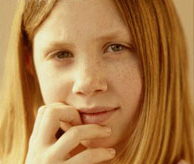| ASA: Treatment | |
| ASA: Learning Approaches | |
| Jeff, Age 35 | |
| Richard, Age 52 | |
| NIMH: Autism Spectrum Disorders (pdf) | |
| AAP - Medical Home & Early Intervention (pdf) | |

Learning Approaches - Treatment and Education of Autistic and Related Communication Handicapped Children (TEACCH)
The first statewide program for treatment and services for people with autism, TEACCH (Treatment and Education of Autistic and Related Communication Handicapped Children) was developed at the School of Medicine at the University of North Carolina in the 1970s. TEACCH uses a structured teaching approach based on the idea that the environment should be adapted to the child with ASD, not the child to the environment. It uses no one specific technique, but rather a program based around the child's functioning level. The child's learning abilities are assessed through the Psycho Educational Profile (PEP), and teaching strategies are designed to improve communication, social and coping skills. Rather than teach a specific skill or behavior, the TEACCH approach aims to provide the child with the skills to understand his or her world and other people's behaviors. For example, some children with autism scream when they are in pain. The TEACCH approach would search for the cause of the screaming and then teach the child how to signal pain through communication skills.
There have been criticisms that the TEACCH approach is too structured, that children with ASD, particularly those individuals who are less affected, become too focused on the charts, organizational aids, and schedules, and that it discourages mainstream behavior (meaning that they may only respond to specific stimuli as taught in their curriculum and not everyday situations). Others feel that, in an environment conducive to learning, ultimately the child with ASD understands what is expected and how to respond.



